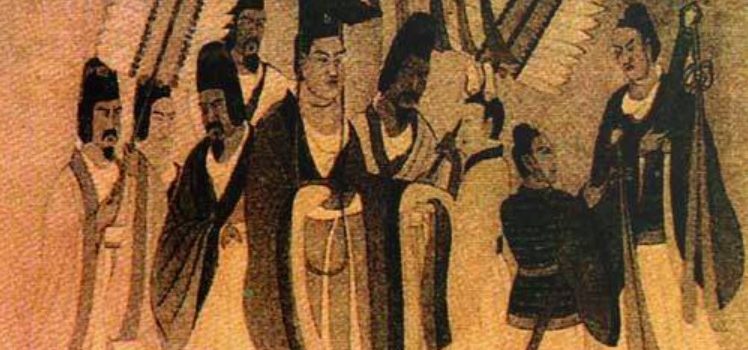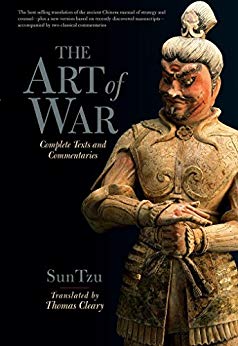

This article is an excerpt from the Shortform summary of "The Art of War" by Sun Tzu. Shortform has the world's best summaries of books you should be reading.
Like this article? Sign up for a free trial here .
What can we learn from the way China’s Wei Dynasty conducted itself in battle? What lessons can the Wei Dynasty teach us about drawing your enemy out, exploiting distance, and forming alliances?
We’ll cover the Wei Dynasty’s military strategies and what we can learn from both their successes and defeats.
The Wei Dynasty Becomes Too Arrogant
The Warring States Era (480 to 246 B.C.E.) saw lengthy civil wars among the various kingdoms and is the era in which The Art of War was written. During this time, the Wei Dynasty, Zhou, Han, and Qi were all viable. The Wei Dynasty and Zhou joined forces against the Han, who sought assistance from the Qi in defense. The Qi, despite being a much smaller state, set out toward the Wei kingdom with the intent to attack.
The Wei Dynasty general, upon hearing this news, left his station in Han territory and headed home. He was arrogant about the weakness and cowardice of the smaller Qi army.
The Qi commander sought the advice of Sun Tzu, who told him to have his army set a thousand fires the first night. On the next evening, the army was to set half the amount and repeat the process of the following night.
Hearing of the dwindling fires, the Wei Dynasty general felt assured of victory and pompously took an elite force to wipe out the Qi. Concurrently, the Qi general estimated the timing of the Wei’s movements. He found a narrow section of road by which the Wei Dynasty army would be traveling at night and created a barrier across it: a large tree trunk with words carved into the side. He then surrounded the area with archers. When the Wei Dynasty general approached the log, he lit a torch to read the engraving. The archers, now with an illuminated target, sent multitudes of arrows into the enemy. Seeing that his men were losing and that he’d fallen into a trap, the Wei Dynasty general took his own life.
Lesson #1: Draw Your Enemy Out (as the Qi Did)
Learn from the Wei Dynasty what not to do. In battle, follow the Qi’s lead and draw your enemy out.
Draw your opponents out. By continuing to draw your opponent out, you cause them to give up their advantage. You force your opponent to focus their strength in a particular direction.
- If they are comfortable, make them mobilize.
- Leaving a place of comfort creates stress.
- Forcing them to continually be on the defensive creates exhaustion.
- If they are healthy and sufficient in supplies, attack their supplies.
- When they are on defense, attack a vital target to ensure their offense.
Be formless. You attack where they are not so they don’t know where to defend. You defend by laying low so they don’t know where to attack. When you are formless, your opponent will not be able to generate intelligence and cannot adapt. The Wei Dynasty general did not follow this advice.
- This will confuse the opponent. They will become wary of your strategies and reluctant to engage in conflict.
Attack what is dear to them. If your opponent attempts to be formless, draw them out by attacking what is dear to them. They will not be able to resist defending and rescuing what is important to them.
- When you force your enemy to take a form while remaining formless, they will naturally spread themselves thin to cover all bases.
- While they are occupied with that, you remain intact and fully manned. Once they are divided, your consolidated strength can attack their divided strength.
- The more defensive positions you manipulate your enemy into establishing, the more diminished their power will become.
The Wei Dynasty Uses Distance as an Advantage
After the fall of the Han dynasty, three kingdoms—the Wu, Shu, and the Wei Dynasty—battled during what was known as the Era of the Three Kingdoms (190 to 265 C.E.). The general of Shu joined forces with the Wei Dynasty, becoming a military governor of what was called “New City.” However, soon after, he defected to the Wu, again switching his allegiance.
The Wei Dynasty general was advised by his commanders to send scouts to observe the actions of the Shu and Wu before reacting. But the Wei general wanted to take advantage of the uncertainty of loyalty that would necessarily follow such a flip-flopping of allegiance. The Wei Dynasty general sent a force to New City, traveling day and night. Meanwhile, the defector assured his commanders that the Wei was too far away. He said his troops would be fortified and ready by the time the Wei learned of his actions and mobilized.
When the Wei Dynasty army arrived eight days later, surprising everyone with their swiftness, they easily pushed through the defector’s ill-prepared army and forced a surrender.
Lesson #2: Location, Location, Location
When the path to battle is long, resources are used and troops tire. This makes either you or your opponent weakened and vulnerable to attack. Therefore, use the distance traveled for battle to your advantage, as the Wei Dynasty army did.
- When your journey to battle is long, double the speed of travel to arrive sooner than expected. Your opponent will be relaxed as they wait and unprepared for your early arrival.
- When your opponent’s journey to battle is short, force them to take circuitous routes to lengthen their journey. Forcing the enemy to defend multiple points or cherished locations disrupts their straight path.
When you travel far for battle, you are in enemy territory. The terrain is unfamiliar. Until you know the advantages and disadvantages of the land, you cannot prepare a strategy. Use local guides to assist in understanding the environment.
- The IChing states, “Chasing deer without a guide only takes you into the bush.”
To gain advantage in a foreign place, you must use deception to manipulate the enemy, as the Wei Dynasty general did.
- Feign your condition to fool enemies.
- Divide and combine forces to exhibit false formations while you are actually formless. False formations confuse and mislead the enemy.
The Wei Dynasty Forms Alliances
During the Three Kingdoms Era, the Shu army surrounded a faction of the Wei Dynasty military. Cao Cao, a Wei general, wanted to relocate the rest of the Wei’s capital away from enemy lines for safety. But a minister of the Wei Dynasty advised against such an action, stating that it exuded weakness. Instead, he said they should form an alliance with the state of Wu. The Shu and Wu were considered to be allies, but the minister knew this was only a surface appearance. He assumed the Wu leadership would begrudge the Shu gains.
Cao Cao agreed and sent an emissary to create an alliance with Wu, who was tasked with attacking the Shu from the back. The Wu were successful, and the Shu retreated from its position surrounding the Wei Dynasty army.
Lesson #3: Form Alliances
As the Wei Dynasty did with the Wu, form alliances.
- Form alliances to increase your strength to a point where fighting would be ill-advised for your opponent.
- Form alliances with the enemy’s allies to disrupt the enemy’s power.
The Wei Dynasty’s Properly Trained Force
Confucius stated that allowing forces not properly trained to enter battle is the same as abandoning your forces in enemy territory.
Another leader, Wu Qi, a general for the Wei Dynasty, advised that the first task of any military action is to properly train the forces. Teach a few to fight, and they will expand and teach others to fight, and so on until a large fighting force is amassed.
Lesson #4: Train Your Forces Well
Soldiers must be trained in all the tactics and strategies possible within a conflict, such as when to strike and when to retreat, when to fortify and when to divide, and when to use resources and when to feed off the enemy. Only after they have learned and mastered these skills and considerations should they be given weapons. Creating experts in battle before providing the tools of battle is the foundation of a good leader, like those in the Wei Dynasty.
———End of Preview———

Like what you just read? Read the rest of the world's best summary of "The Art of War" at Shortform . Learn the book's critical concepts in 20 minutes or less .
Here's what you'll find in our full The Art of War summary :
- How to mislead your enemies to win the war
- Classic examples from Chinese history to illustrate Sun Tzu's strategies
- How to use spies to gather information and defeat your opponents






